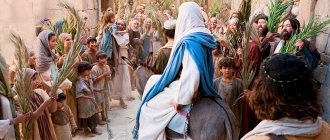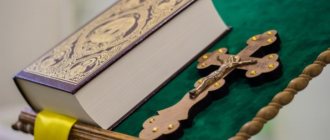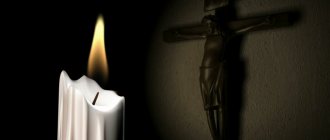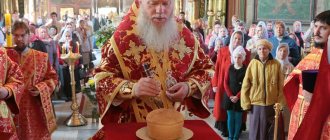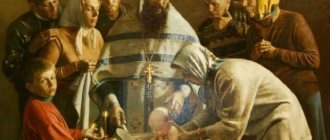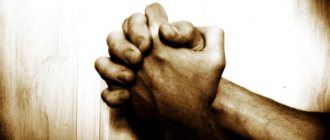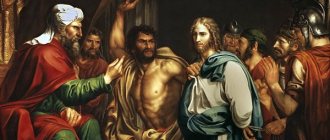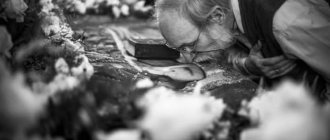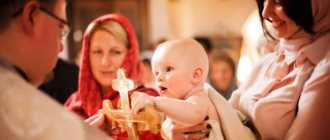Easter week 2022 when will it be
Easter week (Bright, Glorious, Great, Joyful, Red, Velikodenskaya, in the Kostroma region - Khristovochka, in the Chernigov region - Gremyatskaya, in Belarus - Easter) - the week after Easter. Starts in 2022 from May 2 (Easter) and lasts until May 8 (Krasnaya Gorka) . In literature you can also find the name Bright Week. A week in Orthodoxy is six days and a week (that is, Sunday). In modern language, a week is a calendar week.
Good Friday
On Friday, Jesus was crucified, so churches hold readings dedicated to the suffering of the Savior. Believers bow before the shroud and do not serve liturgy in the church.
What can you do? Believers remember the last hours of Christ's life, his suffering in the name of the salvation of mankind. This day should be spent in silence, humility and peace. Dedicate it to caring for loved ones and good deeds.
What not to do? You cannot pierce the ground with iron: dig, plow. Physical labor, fun and cleaning are prohibited.
What can and cannot be eaten? On Good Friday, believers refuse food until the evening service and the removal of the Holy Shroud.
Easter week, what is it?
According to the church calendar, Easter week (Bright Week) is all festive. On Wednesday and Friday, fasting is canceled, so it constitutes one holiday, and each of its days is called Bright. Previously, stories were widely circulated in Russia that Easter week was one day - after the resurrection of Christ, the sun did not set for eight days. The first two days it stood in the east, the next three at noon (zenith), two at sunset, and on the eighth it set.
In large, and especially monastic churches, throughout the entire Easter week, after the liturgy, “artos” (translated from Greek as “bread”) is carried around the temple with a procession of the cross. For this purpose, large bread is specially baked with the image of a cross with a crown of thorns - a symbol of victory over death. It is also possible to depict the image of the Resurrection of Christ. Artos, symbolizing Jesus Christ, was consecrated before the end of the liturgy on Easter Sunday. On Saturday of Easter week, bread is distributed to believers.
The Holy Resurrection of Christ - Easter - the holiday of holidays. I was born in Sarapul - this is the third largest city in Udmurtia, standing on the banks of the Kama River and translated from Chuvash its name means “sterlet”. Since Soviet times, we have had a tradition - to end the Easter week with the celebration of Fomin Resurrection (in 2021 it is May 9). During the atheistic times, out of 21 Sarapul churches, only one survived - the Church of the Resurrection of Christ. For him, Easter is also a patronal holiday. The bishop usually came to Sarapul on Fomino Sunday. Even now, when there are more churches, quite a lot of residents of Udmurtia, Perm Territory, Bashkiria, and Tatarstan come to Sarapul specifically for the Resurrection Church at the end of Easter week.
Great Wednesday
According to the Bible, on this day Judas decided to betray Christ for 30 pieces of silver. Also on Great Wednesday, they remember the repentance of the sinner who washed the feet of Christ and anointed them with myrrh. On this day, believers go to confession.
What can you do? Adults and children are preparing to paint eggs: they are purchasing materials and decor. Housewives wash windows.
What not to do? You cannot sew or embroider. On this day, women are forbidden to talk loudly, wear revealing clothes, or have fun. After midnight you can already set the dough for Easter cakes.
What can and cannot be eaten? On Wednesday the menu is the same as on Tuesday.
How to spend Holy Week while preparing for Easter Week
Holy Week 2022 begins on Monday, April 26 and continues until Saturday, May 1 . This is the seventh and last week of Lent, lasting six days. If possible, visit the temple every day during Holy Week and participate in divine services.
Throughout the year there are circles - it is no coincidence that every Wednesday and Friday of the week is fast, and every Sunday is so consonant with resurrection. And Holy Week is when the weekly and annual circles coincide.
Good Monday - I remember the Old Testament patriarch Joseph, sold by his brothers to Egypt, as a prototype of the suffering Jesus Christ. On this day, the gospel story about Jesus’ curse on the barren fig tree (a tree of the mulberry family that produces figs), symbolizing a soul that does not bear spiritual fruits - true repentance, faith, prayer and good deeds, is not forgotten on this day.
Great Tuesday - we remember Jesus’ denunciation of the Pharisees and scribes, as well as the parables spoken by Christ in the Jerusalem Temple.
Great Wednesday of Holy Week - we remember the repentance of the sinner who anointed Christ with chrism (especially consecrated aromatic oil) and thereby prepared Jesus for burial, as well as Judas’ decision to betray Christ to the high priests for thirty pieces of silver.
Maundy Thursday - the Last Supper, at which Jesus washed the feet of the disciples, the prayer of Christ in the Garden of Gethsemane and the betrayal of Judas are remembered.
Good Friday - we remember the condemnation to death, suffering on the cross and death of Jesus Christ, as well as the removal of his body from the cross and burial.
Holy Saturday of Holy Week is dedicated to the remembrance of the burial and stay in the tomb of the body of Jesus Christ and the descent of Christ into hell.
Each day of Holy Week is great and comparable to a special event that left a significant cultural mark, familiar even to people far from the Church. Take, for example, the parable of the kiss of Judas. Some Christians confess and receive communion every week. Some only post long posts – four times a year. But, if you are a believer, the Great Wednesday of Holy Week is very important, when it is necessary to confess. Each of us has encountered betrayal and the bitter feeling it leaves behind. Therefore, it is important to repent on this very day, so as not to become like Judas himself.
In connection with the special remembrance of the Last Supper on Maundy Thursday, even those Christians who maintain the practice of rare communion strive to receive communion. After all, it was on Maundy Thursday that Jesus Christ instituted this sacrament.
Who is exempt from fasting?
The fast is not observed by children under 7 years of age, pregnant women and nursing mothers. Also, elderly and sick people suffering from disorders of the digestive, circulatory, and endocrine systems should not fast. Those who do heavy physical work are also allowed not to fast.
Holy Week by day: what you can and cannot do
You already know when Holy Week 2022 begins and what this period means for the church and for believers. Let's take a closer look at what you can eat and what you can do on each day of Holy Week. We will also learn about church prohibitions for each day of Holy Week.
How to prepare at home for Easter week 2022
The entire Great Lent and Holy Week are preparations for the Bright Resurrection of Christ and Easter Week.
There is no rule established by the Orthodox Church that on Maundy Thursday you need to paint eggs and bake Easter cakes. This is one of the biggest misconceptions, comparable only to the religious significance of Thursday salt. There are extremely well-established folk customs and a popular idea about black salt, which is supposedly prepared during Holy Week on Maundy Thursday at the church, and then distributed at the service.
Coloring eggs and baking Easter cakes used to be done starting from Maundy Thursday, since this was associated with certain difficulties in the technology of preparing dishes and with their large volume. Now you can cook Easter dishes on both Friday and Saturday. To help cooks, there are small household appliances and a stove that bakes without pre-heating for a long time. There are no restrictions on “rights”.
During Holy Week there are no special prohibitions or rules for preparing dishes for the festive Easter table. The set depends entirely on the hostess; there is only a mandatory dish - Easter eggs. According to one of the established versions, their obligatory presence is associated with the meeting of Mary Magdalene and Emperor Tiberius, when, after the words: “Christ is Risen!” chicken eggs turned red. Everyone is allowed to paint eggs and prepare Easter treats; there are no restrictions either. Atheists, children, believers can all take part in preparing the holiday.
Interestingly, in our region there are quite a lot of not just interethnic, but also interfaith families. I have never heard of any gastronomic conflicts, but I know a lot of examples when a Muslim wife paints eggs, prepares Easter cheese and bakes Easter cakes.
There is only one general rule regarding the preparation of Easter dishes - everything we do, we do with love. I myself will paint the eggs the old fashioned way - with onion skins. I don’t know what the secret is, but they always seem incredibly tasty to me.
You can bless the prepared dishes starting from Vespers on Great Saturday, at the end of the Easter service on the night from Saturday to Sunday and on the morning of Easter Sunday, that is, on Easter, May 2.
Maundy Monday
On this day, churches hold services and remember stories from the Old Testament about Patriarch Joseph, who was sold into slavery by his brothers.
What can you do? Believers on this day attend church or read the Bible at home. Also on Holy Monday, preparations for the bright holiday of Easter begin. On this day, housewives clean the house, wash the floors, whitewash the walls and throw away unnecessary things. What else can you do on Maundy Monday? It is necessary to put everything in its place, clean out the closets and fix things that need to be repaired.
What not to do? On Maundy Monday it is forbidden to swear, have fun and have fun.
What can and cannot be eaten? You can eat plant foods: bread, fruits, vegetables, honey, nuts. In addition to general prohibitions, religious people also refuse hot food and limit the consumption of vegetable oil.
What to do with the shells of eggs blessed in church for Easter week
Previously, the shells of colored eggs were buried in the ground; some, especially in villages, used them to feed livestock and poultry. Now in comfortable housing without fireplaces and stoves, inedible leftover food from the Easter table ends up in the trash. And this is wrong!
I advise, on the one hand, to avoid excessive fanaticism, and on the other, to be more careful when decorating the festive table and dishes. So, artificial flowers are initially not welcome. It’s also not worth using stickers and then consecrating these eggs. Just think: what will you, your family and friends do with them later? Especially if the sticker is not just some kind of ornament or design, but an image of an icon with the face of Christ, the Most Holy Theotokos. Would any Christian really raise his hand to break such an egg, and then?! To avoid temptations, think before using this or that decoration. It’s better to let everything be natural, natural – from nature.
Maundy (Maundy) Thursday
Maundy or Maundy Thursday takes us back to the time of the Last Supper and the betrayal of Christ by Judas. In the evening, one of the longest services takes place in churches, in which all the sufferings of Christ are mentioned. Believers stand at Vespers with candles, and then, without extinguishing them, go home. On this day, Christians try to take communion.
What can you do? A day for general cleaning, putting things in order, baking Easter cakes. Do not forget about the purity of soul and body - on Maundy Thursday it is customary to bathe, repent of sins and turn to God in prayer.
What not to do? After cleaning, dirty water should not be poured near the house or in places where there are plants. On Maundy Thursday it is also forbidden to tell fortunes and leave dirt and unwashed dishes in the house. You also cannot ask God for money and wealth.
What can and cannot be eaten? On Maundy Thursday, fasting people are allowed relief in the form of hot food and a glass of wine.
Forgiveness Friday and bright weekend
The tradition of this day was drinking homemade beer. The mother-in-law and father-in-law invited their son-in-law to their place to try the resulting drink together. Before this, prayers were read over the container, asking God for mercy.
In the Tula region, the wife’s parents invite all relatives from their daughter’s husband’s side to visit. And in the Vologda and Kostroma provinces, beer was brewed by the entire community, sharing the costs. And we tried it together too. Belarusians call this Friday red, as girls washed their faces with spring water early in the morning to preserve youth and beauty. There is a similar custom in Bosnia.
In Vladimirov there was a tradition of “pleasing the proud.” The husband's parents visited the newlyweds and, if they liked their daughter-in-law, tried in every possible way to please her. And in the Yaroslavl region, newlyweds came to the relatives of their newly-made wife. Guys and girls in the Chernigov region performed a ritual of “seeing off” mermaids.
Young people were actively looking for a mate on Krasnaya Gorka. Staying at home was considered a negative sign, so everyone went out on a grand scale.
Special bread Artos
It is made from sourdough dough, decorated with an image of a cross or the moment of resurrection on top. The bakery is blessed on Monday, after which it stands on the table in front of the icon of the Savior all week. During the service, the bread is moved to the right of the Royal Doors, and is also taken out during the religious procession.
Why are such complications necessary? According to legend, after the Resurrection of the Lord, the disciples gathered for a meal, leaving some of the bread for Him, as they were always used to doing. This tradition is still alive in monasteries. With the beginning of Bright Week, Artos is brought into the refectory and placed in an empty place at the table. This is a symbol of the invisible presence of Christ.
Bread is distributed on Saturday. In the morning, immediately after the service. But they eat it only in extreme cases, for example, to get rid of ailments.
Hailing of the young or Vyunishnik
Among the numerous spring pagan rituals, the holiday honoring married couples stands out. Those who got married over the past year accepted congratulations. This action completed a long period of post-wedding festivities.
On Saturday, before sunrise, young, brightly dressed people gathered in groups of 5-10 people. They sang and danced under the windows of the newlyweds, not missing a single couple. The text performed by the “callers” described local traditions, as well as the life of the spouses. Each verse gave advice on how to please sisters-in-law, mother-in-law and mother-in-law.
The singers always received a treat for their efforts. These were pies, gingerbread, Easter cakes, eggs, vodka or mash. Some added specie to the treat. In some areas there was an age division:
- In the morning there were children under 12 years old.
- After lunch - adults. First women, later men.
"Street"
The most popular entertainment among single boys and girls in the southern regions of Russia was open-air festivities. The gathering place could be any open clearing: in a square, by a river, next to a forest.
The parties began in the middle of Holy Week, and ended with the approach of cold weather - on September 1st. Before the field work season, young people organized similar picnics every day. But after going out into the field - only on Sundays and holidays. The festivities were accompanied by songs, dancing, and flirting. Couples often formed and got married in the fall.
Folk rituals of Week
The main role in the celebration of Bright Week was given to the commemoration of the departed.
This was not consistent with the church doctrine of universal joy from the Resurrection of the Lord. But our ancestors were sure that during this week the spirits of deceased relatives return to the world of the living to share food and shelter with them. The first and fourth days of the week were considered funeral days. According to tradition, it was supposed to visit cemeteries, leave gifts on tombstones and invite the deceased to visit. Therefore, the doors were left open, and towels hung on the windows like flags.
Housewives did not sew, so as not to blind the spirits, and did not wash clothes. It was forbidden to cry and lament - this could upset the deceased relatives and prevent them from existing peacefully in the next world. Another part of the rituals related to the revival of life, family and procreation. This week began the festivities and bride viewings.
Each region had its own traditions. For example, in the Arkhangelsk province, girls in elegant dresses played bacha in the square. The entertainment was to knock down a wooden figurine from a pole. In the Oryol province, unmarried women gathered separately from men, cooked food and had a good time. A kind of “beauty contest” was held in Ryazan, after which races were held among the fair sex.
Holy Saturday
Holy Saturday is dedicated to the memory of the Savior's removal from the cross, his burial and stay in the tomb.
What can you do? On Saturday evening, believers go to the main service itself to bless the Easter cakes and celebrate Great Easter.
What not to do? Physical labor, vanity, entertainment, quarrels and conflicts are prohibited.
What can and cannot be eaten? On Holy Saturday, Lenten burning food without vegetable oil is allowed.
After Holy Saturday comes the bright holiday of Easter, people rejoice and congratulate each other on the resurrection of Christ.
Feast of Baths on Tuesdays after Easter
On the second day of the week, it was the turn of the fair half to visit friends. But now these conventions are rarely observed. Usually the whole family comes to visit.
As the name implies, dousing was not limited to Monday. But this time a portion of cold water went to those who slept through the morning service. This custom is mentioned in the Gustino Chronicle as a tribute to the Mother Raw Land, the cult of which existed long before Christianity.
While the young villagers were having fun, the adults were looking for duckweed flowers, and when they found them, they began to trample them, hoping to live another year. A large swing was installed in the middle of the village. While riding, people asked for a good harvest. According to another belief, with every breath of wind, bad thoughts and feelings left a person.
